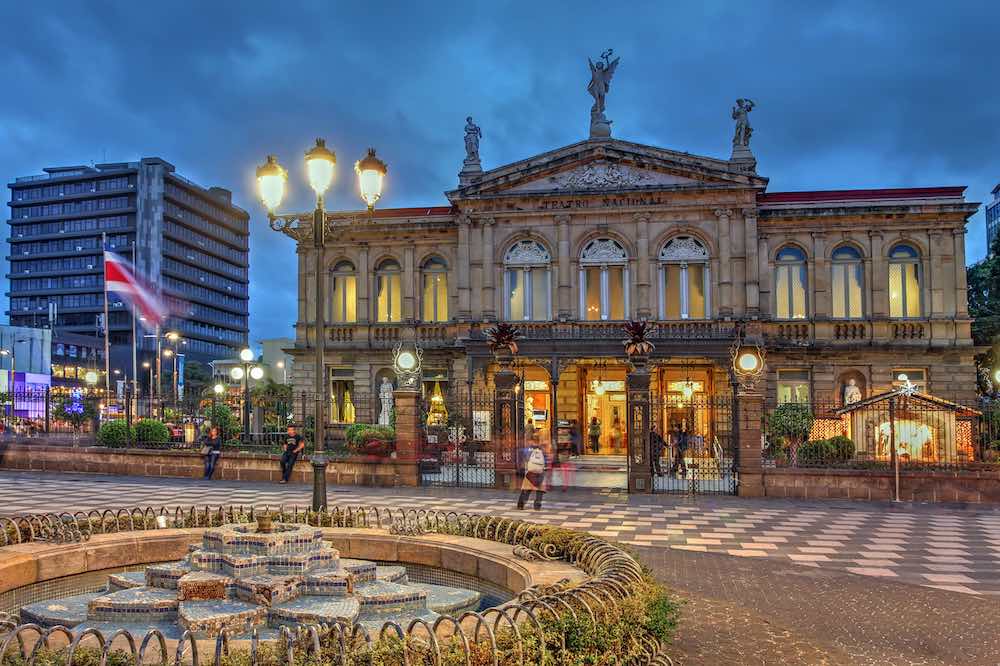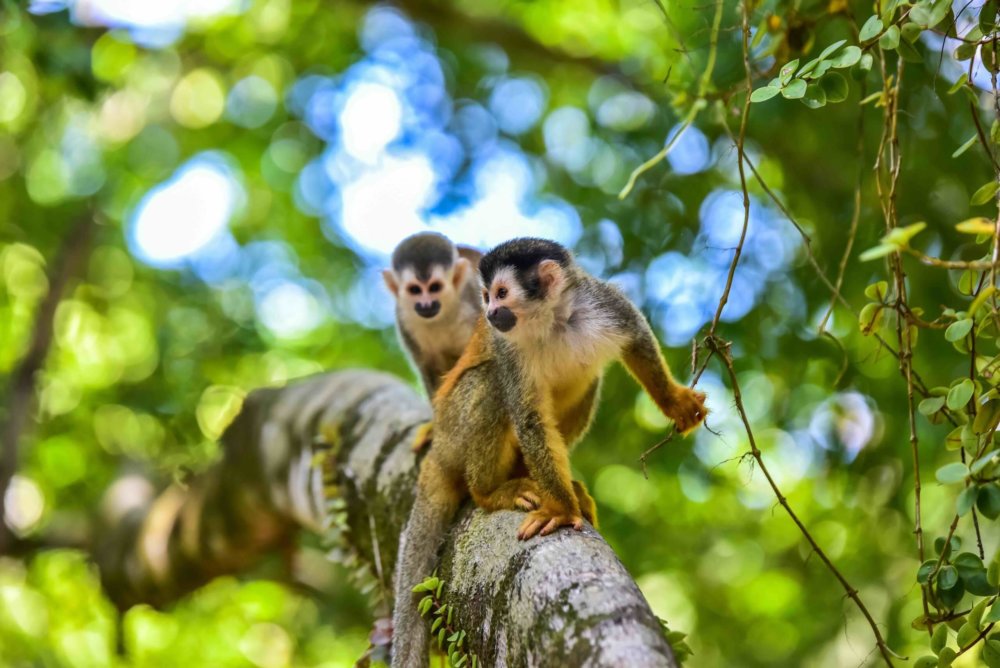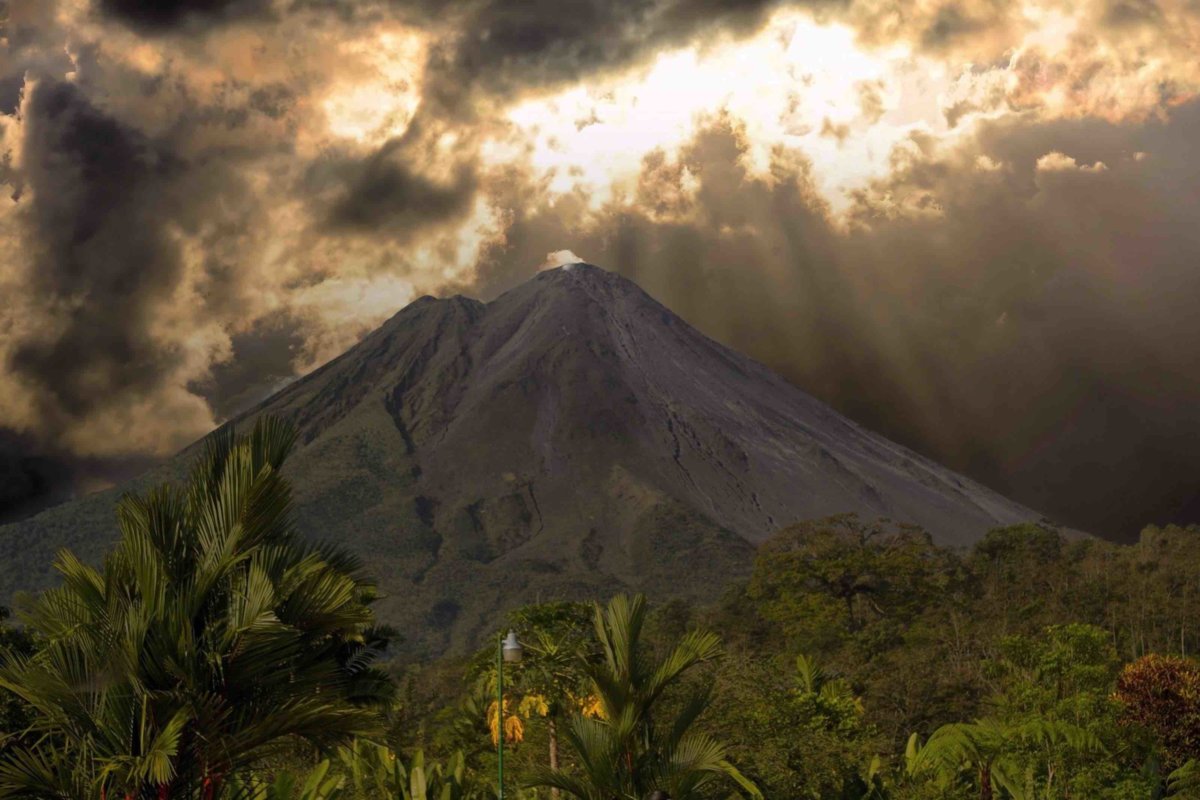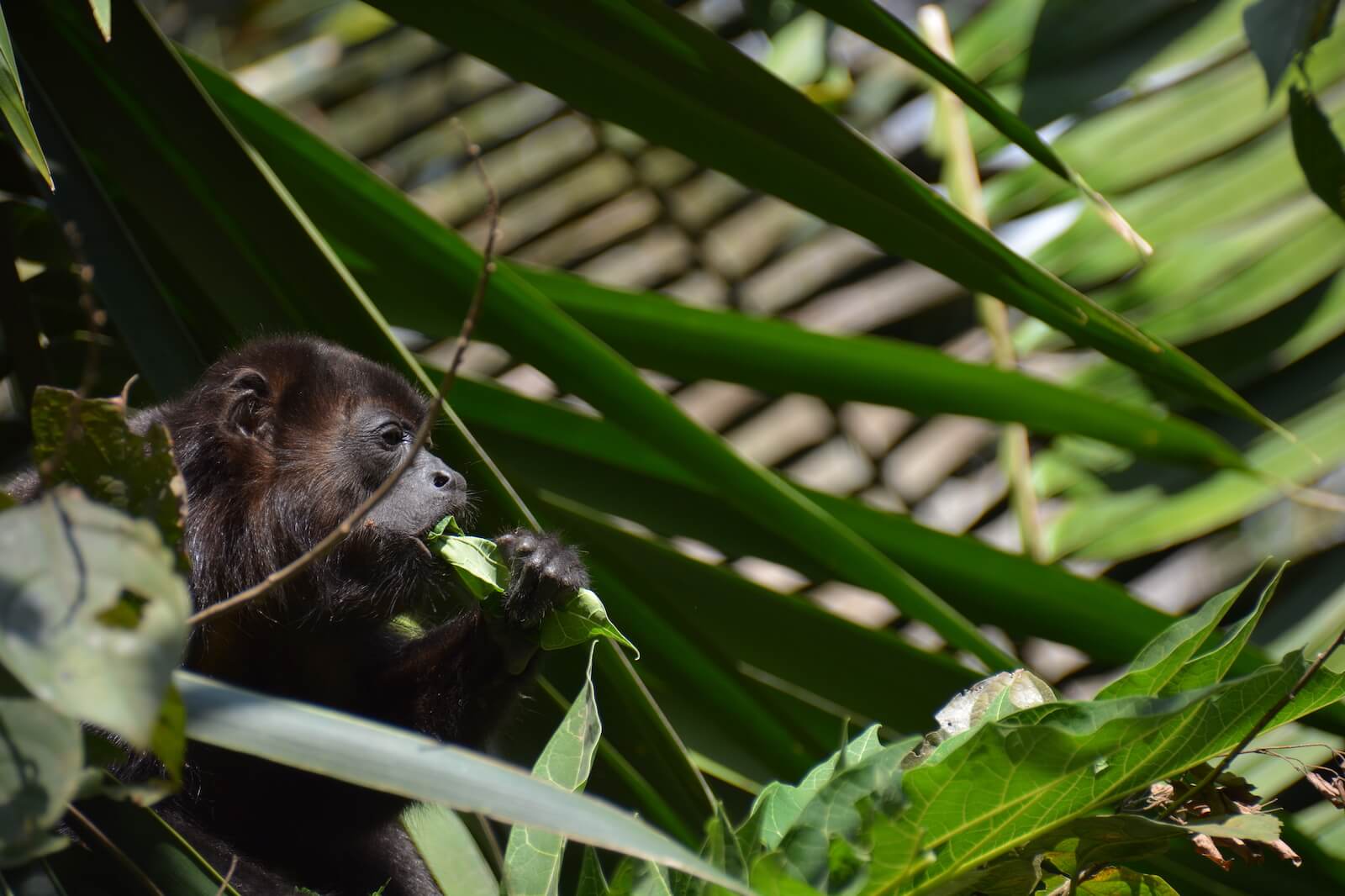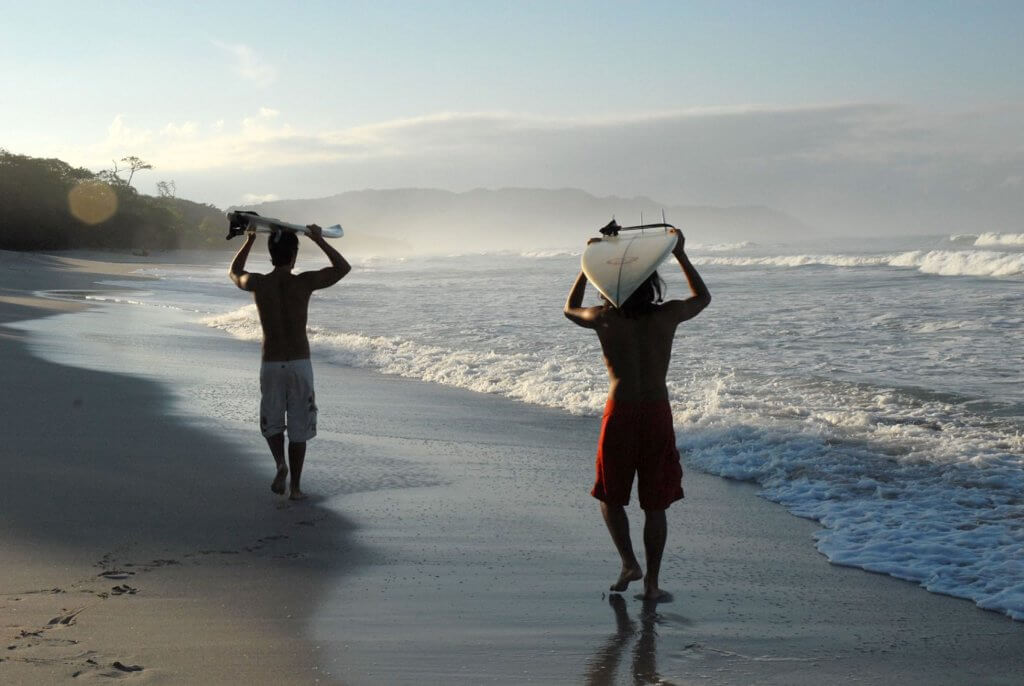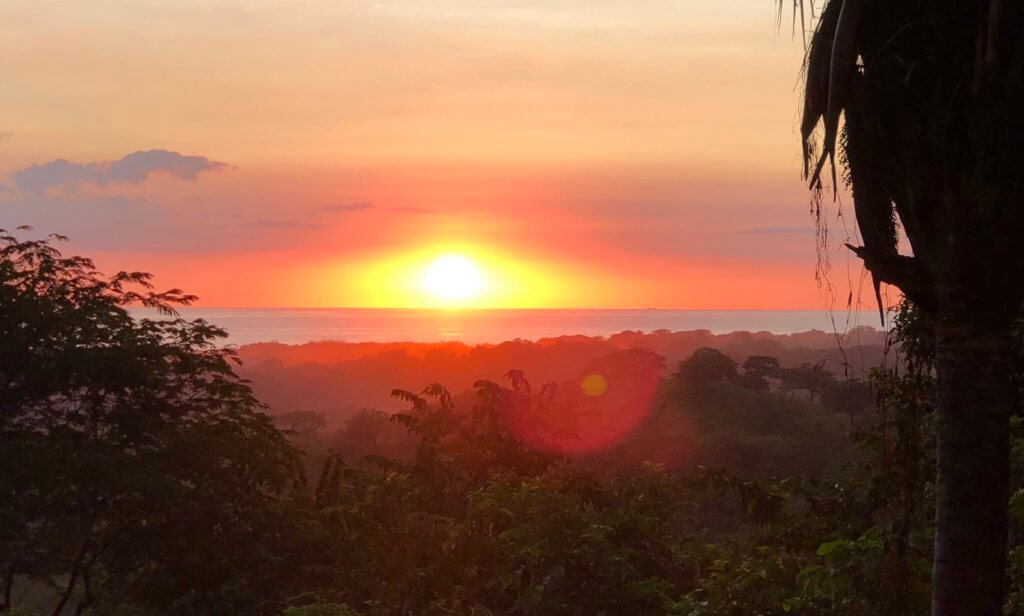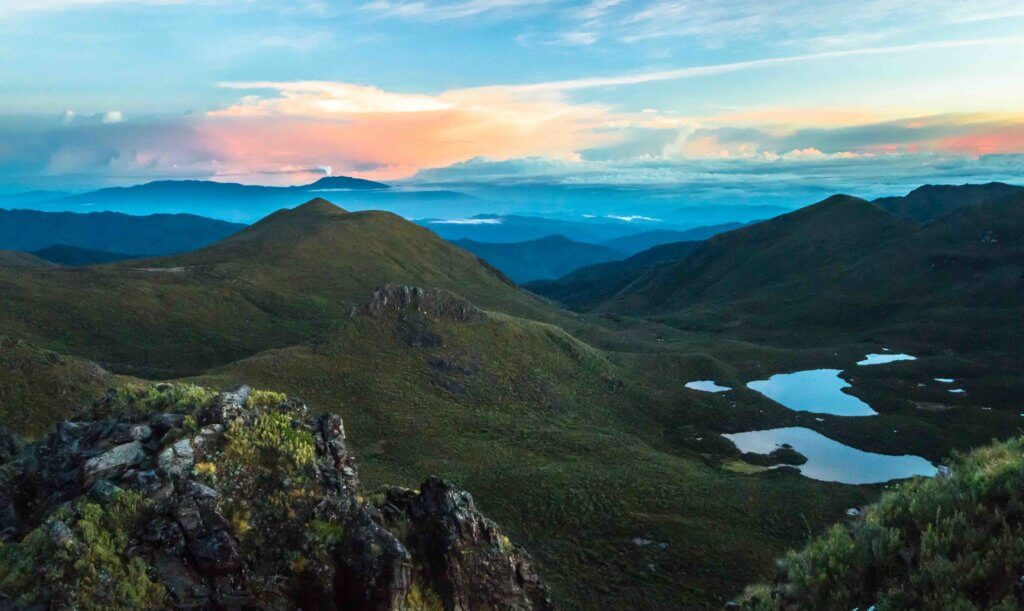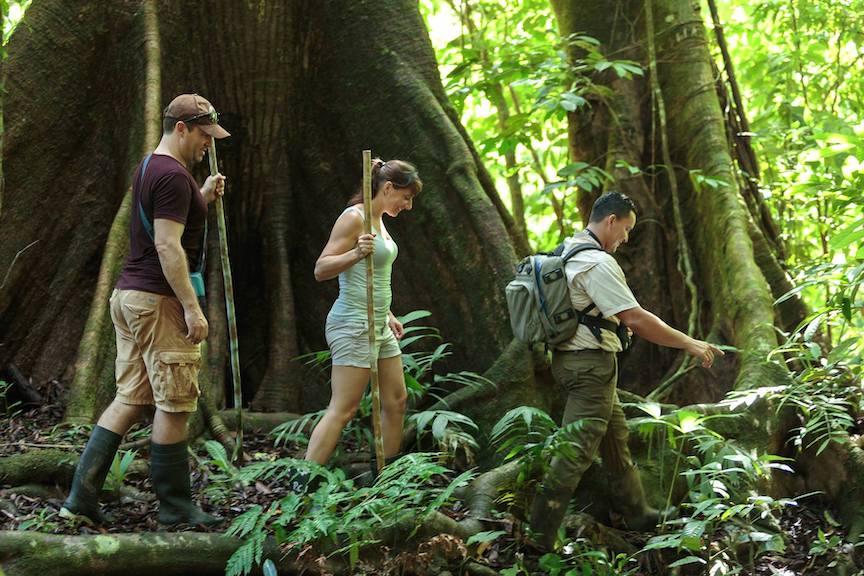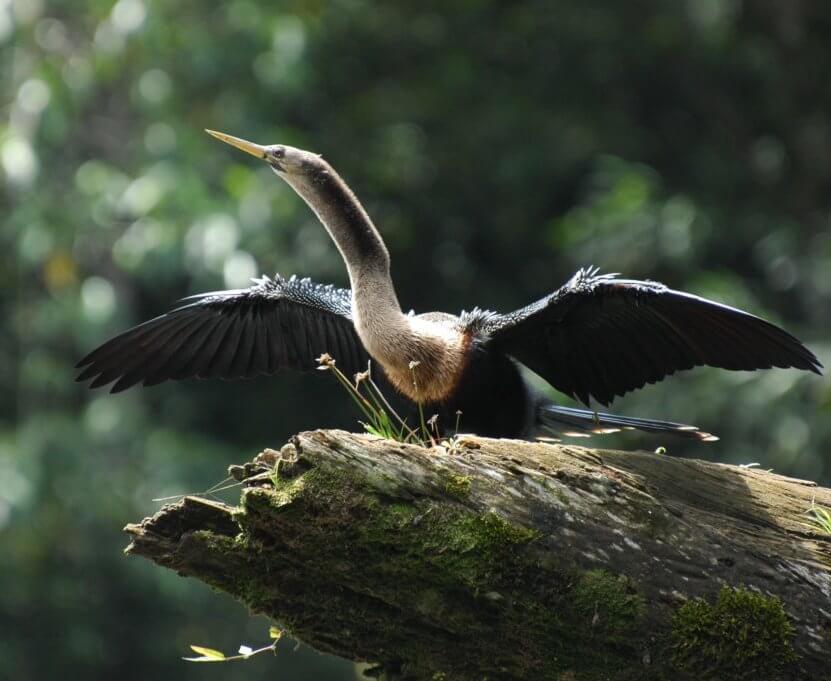
Work with our team of professional travel experts and build safe, personalized & authentic, South American Trips for your clients. We can offer your travelers an unrivaled experience customized to their specific needs.
Covering just 0.03% of the earth’s landmass, Costa Rica certainly makes up for its size with the amount of flora, fauna and adventure. With close to 4% of the all species on Earth to be found in Costa Rica, this Central American country between Nicaragua and Panama is a land of emerald green cloud forests, glistening azure waters and soaring volcanic peaks. Often referred to as the Switzerland of Central America, Costa Rica is one of the most stable, prosperous and progressive countries in Latin America having no standing army since it was abolished in 1949. This is also one of the reasons why the Inter-American Court of Human Rights and the UN’s University for Peace is located in Costa Rica.
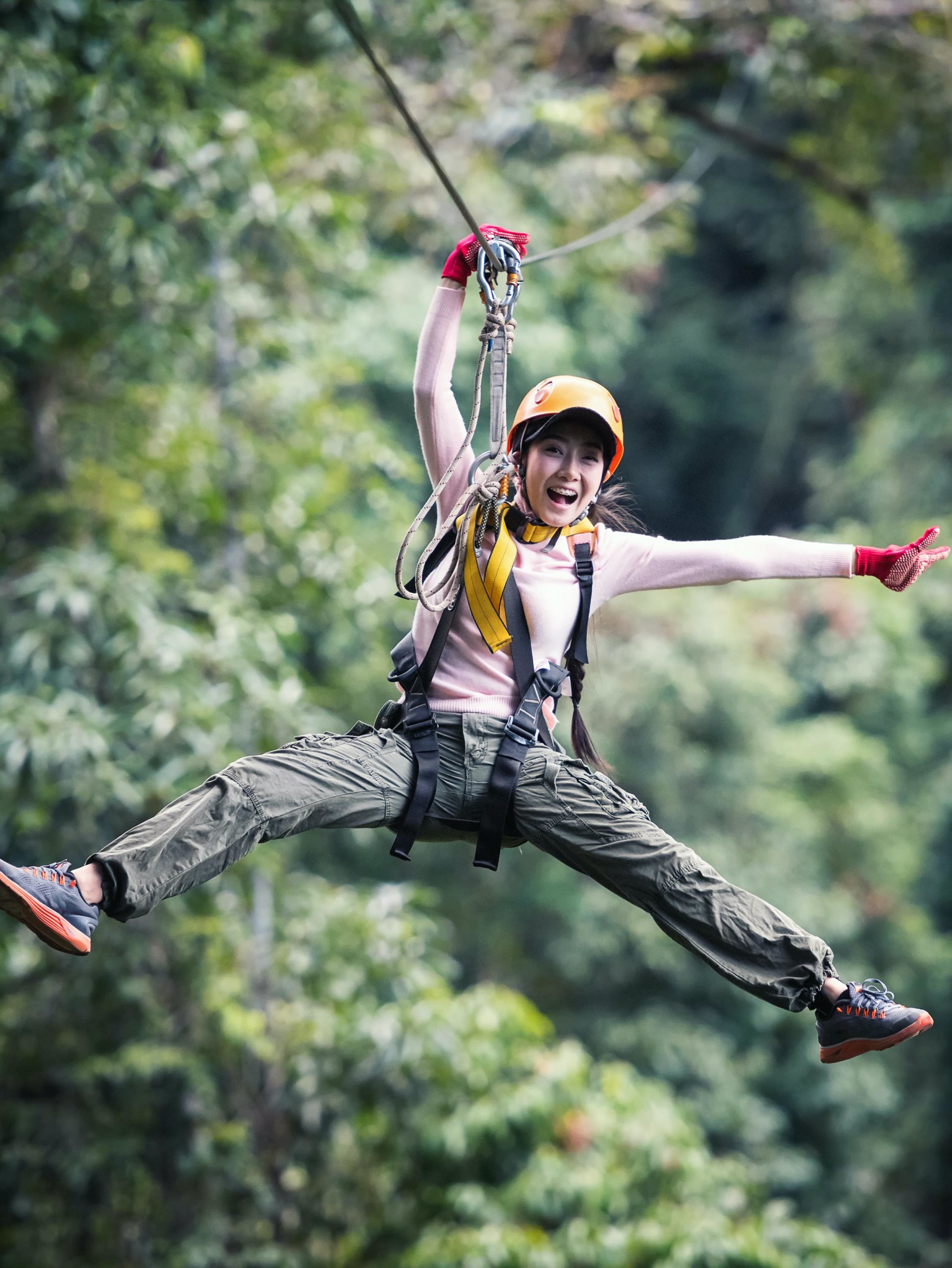
The ‘Pura Vida’ of Costa Rica

As well as providing a safe place to live for Costa Ricans, the country is a haven for travelers no matter what they want to get from their vacation. Adventurous travelers can take advantage of the hiking, snorkeling and wildlife spotting opportunities which are abound in Costa Rica while zip-lining through the cloud forest while those looking to unwind can take in the miles and miles of golden sand beaches on both the Caribbean and Pacific coasts. Costa Rica is perhaps one of the only destinations in the world where you can explore the jungle rivers one day, visit one of the many volcanoes the next before relaxing on a white sandy beach backed by swaying palm trees.
Costa Rica with its 26 protected National Parks, misty cloud forests, bubbling volcanoes, tumbling waterfalls and paradise beaches is a traveler’s haven. The year round destination of Costa Rica has wowed and stunned all those who visit with its bright colors, mind-blowing landscapes and sheer undeniable beauty!
build your clients trip with our experts


explore the highlights
San José
Sprawling and chaotic at first sight, San José is nonetheless a vibrant capital with plenty to see and do. There are still pockets of colonial gems around San José and some very fine museums and green spaces, as well as a lively cultural life.
Manuel Antonio
Arenal & La Fortuna
Monteverde
Tortuguero
On Costa Rica’s northern Caribbean Coast,, Tortuguero is a water world made up of canals, lagoons, streams and dense rainforest. Known as the ‘Land of Turtles’, Tortuguero is one of the world’s most important turtle nesting sites!
Puerto Viejo
Tamarindo
Nicoya Peninsula
Rincon de la Vieja
Central Highlands
Osa Peninsula
Sarapiqui
destination map

| Title | Address | Description | |||
|---|---|---|---|---|---|
San José | San José, Costa Rica | Sprawling and chaotic at first sight, San José is nonetheless a vibrant capital with plenty to see and do. There are still pockets of colonial gems around San José and some very fine museums and green spaces, as well as a lively cultural life.Read more… | |||
Manuel Antonio | Parque Nacional Manuel Antonio, Provincia de Puntarenas, Quepos, Costa Rica | In the Manuel Antonio National Park you’ll find sloths, iguanas and the rare squirrel monkey among many other species. In the pristine waters around the perfect bays there is a flurry of marine life from dolphins and turtles to whales and colorful tropical fish.Read more… | |||
Arenal & La Fortuna | Volcán Arenal, Provincia de Alajuela, San Carlos, Costa Rica | The presence of the impressive Arenal Volcano is everywhere. Whether strolling around La Fortuna village, canopy rappelling in the forest, boating along Lake Arenal, horseback riding or hiking the countryside…adventure lies around every corner.Read more… | |||
Monteverde | Provincia de Puntarenas, Monteverde, Costa Rica | Home to Costa Rica’s most stunning and pristine Cloud Forest where you can find birds, monkeys and people (zip-lining of course) flying through the trees! There are plenty of adventures from the Sky Walk to horseback riding and hiking.Read more… | |||
Tortuguero | Tortuguero, Limón, Costa Rica | On Costa Rica’s northern Caribbean Coast,, Tortuguero is a water world made up of canals, lagoons, streams and dense rainforest. Known as the ‘Land of Turtles’, Tortuguero is one of the world’s most important turtle nesting sites! Read more… | |||
Puerto Viejo | Limón, Puerto Viejo de Talamanca, Costa Rica | The laid-back pace of this Caribbean beach town is bound to win you over. Here you’ll get a taste of Costa Rica’s Creole culture and enjoy the adventures of the nearby Gandoca-Manzanillo Wildlife Reserve as well as relaxing in its calm Caribbean waters. Read more… | |||
Tamarindo | Provincia de Guanacaste, Tamarindo, Costa Rica | This once small, unassuming fishing village on the Pacific Coast has become the center of Costa Rica’s high-end beach scene. Tamarindo offers designer shopping, incredible restaurants and plenty of nightlife for those seeking a not so quiet beach setting. | Nicoya Peninsula | Península de Nicoya, Costa Rica | Jutting out out into the Pacific, this tropical peninsula is a mountainous and sparsely populated area with an abundance of wildlife. The stunning coastline is dramatic and unspoiled with long stretches of sandy beaches backed by jungle.Read more… |
Rincon de la Vieja | Volcan Rincon de la Vieja, Provincia de Guanacaste, Costa Rica | There are many ways to experience the area ranging from hiking, rappelling, rock-climbing and canopying to relaxing horseback rides and soaking in the volcanic hot springs flowing from the mountain – one of the major draws of the region.Read more… | |||
Central Highlands | Cordillera Central, San José, Costa Rica | This region has some of the highest mountains in Costa Rica with cool, misty cloud forests and rushing rivers. It runs from Nicaragua to Panama and separates Costa Rica’s Caribbean and Pacific Coasts, creating two very different climatic regions. Read more… | |||
Osa Peninsula | Peninsula de Osa, Provincia de Puntarenas, Costa Rica | The Osa Peninsula is an untouched natural wonderland with wildlife-filled rainforests and palm-backed Pacific beaches. Visit the Osa Peninsula’s Corcovado National Park where almost one-tenth of all the mammals found in the Americas live! Read more… | |||
Sarapiqui | Heredia, Sarapiquí, Costa Rica | Puerto Viejo de Sarapiqui in the lush Caribbean lowlands is known for its natural environment filled with tropical flora, and for the broad Sarapiqui River that flows through it. Read more… |
Depending on your client’s preferences, we can help you determine the best experiences tailored for your clients. From where to visit, when to go, what to do and how to get there safely, our travel experts will help you create an experience your clients will love.
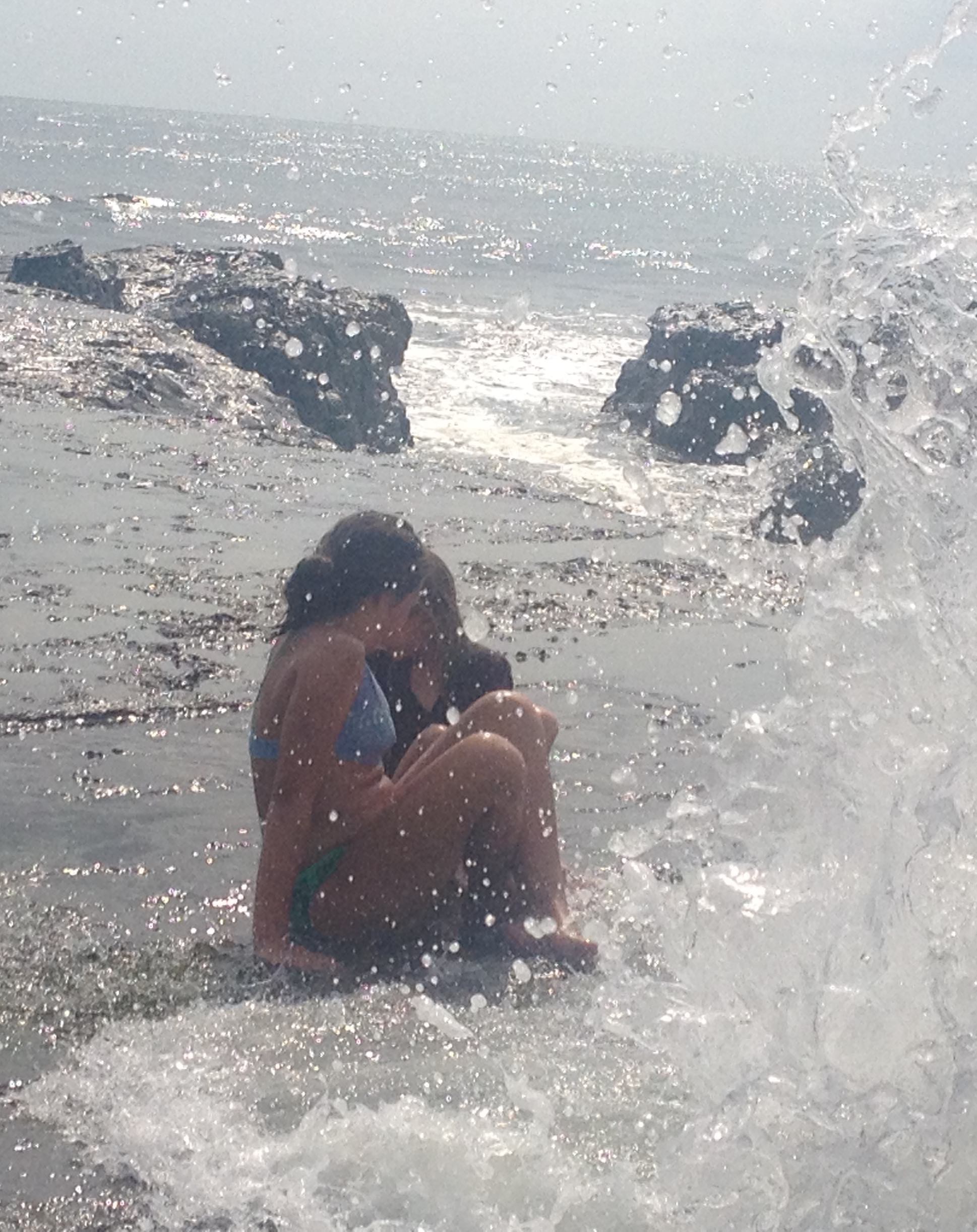
at a glance:
SEASONS & PEAKS
Spring (Sept-Nov) – September and October is the peak of the rainy season, it will rain a lot everywhere in Costa Rica. November the rain stops. This is the best time to go, before high season sets in
Summer (Dec-Feb) – Summer sets in and the rain stops – best time to go.
Autumn (Mar-Apr) – The dry season of Costa Rica, it can get really hot and dusty on the Pacific side
Winter (Jun-Aug) – Rainy season. July usually has less rain.
Best times to
visit Costa Rica
The dry season in most of Costa Rica runs from mid-December to April, with Christmas and Easter being the busiest times to travel to the country in terms of the number of tourists. In the lowland areas, March and April are extremely hot, with temperatures in the arid North Pacific frequently exceeding 90ºF (32ºC). Despite being called the dry season there is still some rain although it will be a quick downpour and before you know it, you’ll be able to enjoy the sweltering sunshine again.
The green season is the wettest time to travel to Costa Rica with afternoon showers kicking in by May and lasting through to November, with a brief mini-dry season in June and July. Rain or not, North American and European summer vacations do increase the number of tourists visiting especially from June to August. The rain is particularly heavy in September and October and results in the slowing down of the number of tourists visiting the country. During this period the roads are muddy and the rivers begin to rise, making off-the-beaten-track travel more challenging. Although the rainfall is highest, the storms bring swells to the Pacific, and the best surfing conditions can be enjoyed during this period.
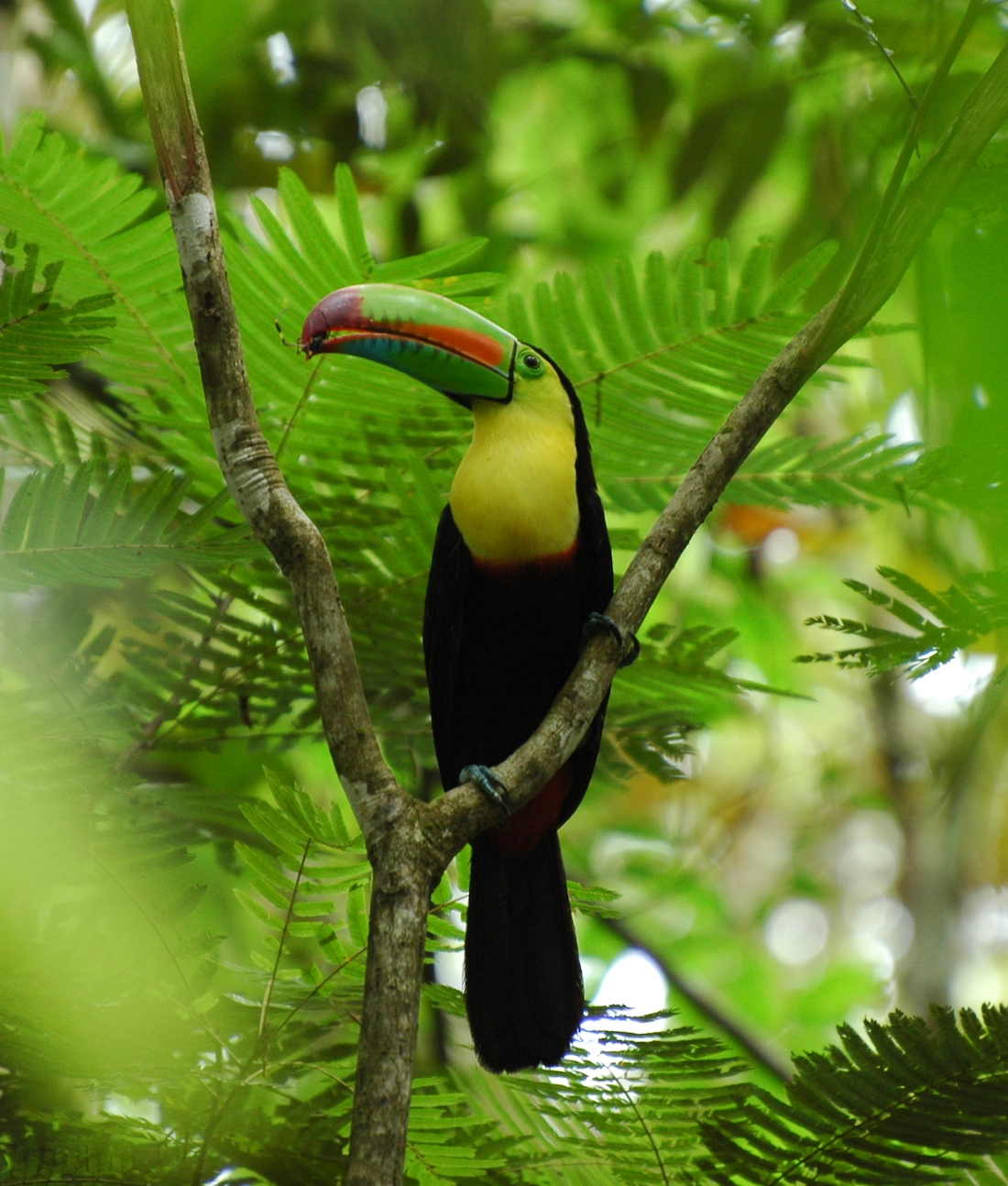
regional weather:
The rainy season on the Pacific side is from June to mid November. On the Caribbean it usually rains year round, but more in December and January
| Jan | Feb | Mar | Apr | May | Jun | Jul | Aug | Sep | Oct | Nov | Dec | |
|---|---|---|---|---|---|---|---|---|---|---|---|---|
| Central Highlights |  |
 |
 |
 |
 |
 |
 |
 |
 |
 |
 |
 |
| Pacific Coast |  |
 |
 |
 |
 |
 |
 |
 |
 |
 |
 |
 |
| Carribean Coast |  |
 |
 |
 |
 |
 |
 |
 |
 |
 |
 |
 |
Costa Rica Info
Capital City: San Jose
Currency: Colones (CRC₡530 to US$1.00)
Language: Spanish
Obtaining colones outside Costa Rica is virtually impossible so we recommend that you wait until you arrive and get some at the airport or at border posts. It is worth noting that US Dollars are dispensed from most ATMs in Costa Rica and with the exception of the smallest towns and shops in rural areas, credit cards are widely accepted. When heading for the more remote areas, try to carry sufficient colones with you, especially in small denominations otherwise you may find that you have trouble changing a 5000 colón note in the Osa Peninsula, for example. We recommend visiting the website XE Currency Converter to get current exchange rates.
We recommend visiting the website XE Currency Converter to get current exchange rates.
Customize Your Client's Experience
Our eight local Offices in Latin America give us the perfect base to offer your travelers an unrivaled experience with a wide selection of bed & breakfasts, small posadas, unique boutique hotels and world class luxurious lodging; you and your clients are able to design an authentic experience that meets both their comfort level, budget and expectations.
practical information
SAFETY
Costa Rica is a largely safe country and is considered the Switzerland of Central America having also abolished its army since 1949. However petty crime such as bag snatchings can take place as in any major urban area in the world, so it’s important to be vigilant. Remember you’re foreign and so will stick out already. Keep a close eye on your belongings and don’t wear lots of eye catching jewelry or flash expensive cameras, laptops or iPhones around. Many of Costa Rica’s dangers are in fact nature-related with riptides, earthquakes and volcanic eruptions as well as predatory and venomous wildlife posing a threat which is why a wildlife and nature guide is essential if trekking in the jungle.
VACCINATIONS
No mandatory vaccinations are required to visit Costa Rica. The government of Costa Rica requires a valid yellow fever International Vaccination Certificate at least 12 days prior to entering Costa Rica if you are arriving from a country with risk of yellow fever. In the Americas this includes if you are traveling from the following countries: Argentina, Bolivia, Brazil, Colombia, Ecuador, French Guiana, Guyana, Panama, Paraguay, Peru, Suriname & Venezuela. We do recommend visiting the Centers for Disease Control and Prevention, as well as check the vaccines and medicines list and visit your doctor (ideally, 4-6 weeks) before your trip to make sure everything is up to date.
VISA
Nationals of the USA and the EU do not require a visa to enter Costa Rica and are granted a 90 day travel visa upon arrival. Citizens of other countries may require a visa to enter Costa Rica and it is generally advised that they contact the Costa Rican embassy in their home country for information. The Wikipedia Visa Policy of Costa Rica is a great starting point to begin exploring whether or not any particular nationality might need to obtain a tourist visa to visit Peru.
ELECTRICITY
Electricity in Costa Rica runs at 120 Volts, so transformers are not necessary for tourists from the USA. If you are planning to use anything with a three-prong plug, bring an adapter, as some establishments only have two-prong outlets. If you’d like to learn more about the types of plugs in Costa Rica, check out the website What Plug Info – Costa Rica.
FAMILY TRAVEL IN COSTA RICA
Costa Rica is arguably one of the best family-friendly travel destinations in Latin America. With diverse and exotic wildlife, tropical beaches and enough outdoor activities to keep even the most adrenaline-fueled teenager entertained you and your family will be spoiled for choice on where to go. Your destination options aren’t limited by region allowing both the kids and adults to have a fun and adventure-filled vacation. So what are you waiting for…bring the whole family to Costa Rica and share unforgettable experiences such as ziplining through the Cloud Forest, spotting a sloth, slowly paddling a kayak through mangroves, or taking a night hike in search of tropical frogs.
GETTING AROUND COSTA RICA
Costa Rica can be reached via a number of direct international flights from the USA, Canada and other countries within Latin America. There are two international airports, Aeropuerto Internacional Juan Santamaría on the outskirts of the capital city of San José and Aeropuerto Internacional Daniel Oduber Quirós in Liberia. Domestic flights within Costa Rica are inexpensive and flying to popular destinations such as Puerto Jiménez, Quepos and Tortuguero will save you the driving time.
OTHER TRANSPORTATION
Buses in Costa Rica are very reasonably priced, with extensive coverage of the country, though travel can be slow and some destinations have infrequent service. Private and shared shuttles that take you from door-to-door between popular destinations can save time by allowing you to schedule to your needs.
Renting a car allows you to access more remote destinations that are not served by buses, and frees you to cover as much ground as you like, especially if you have a limited time frame. Cars can be rented in most towns and if you are thinking about renting a car we recommend a 4WD vehicle as it is essential in some parts of the country. You should also avoid driving at night and make sure you have a Satellite Navigation System.
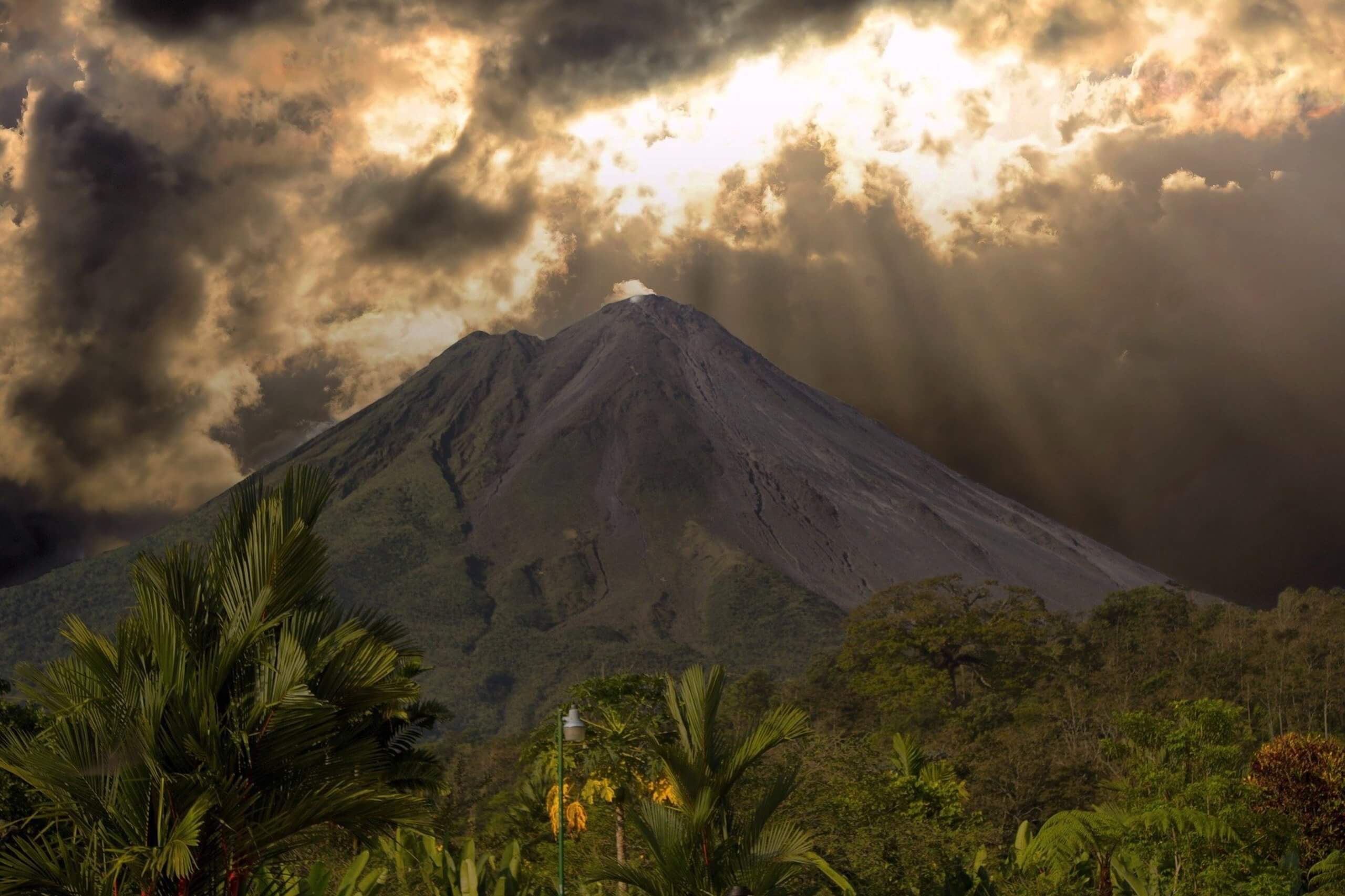
our countries
With eight local offices in Latin America, we have the perfect base to help you build the perfect trip for your clients. Unrivaled experience with a wide selection of bed & breakfasts, small posadas, unique boutique hotels and world class luxurious lodging.

